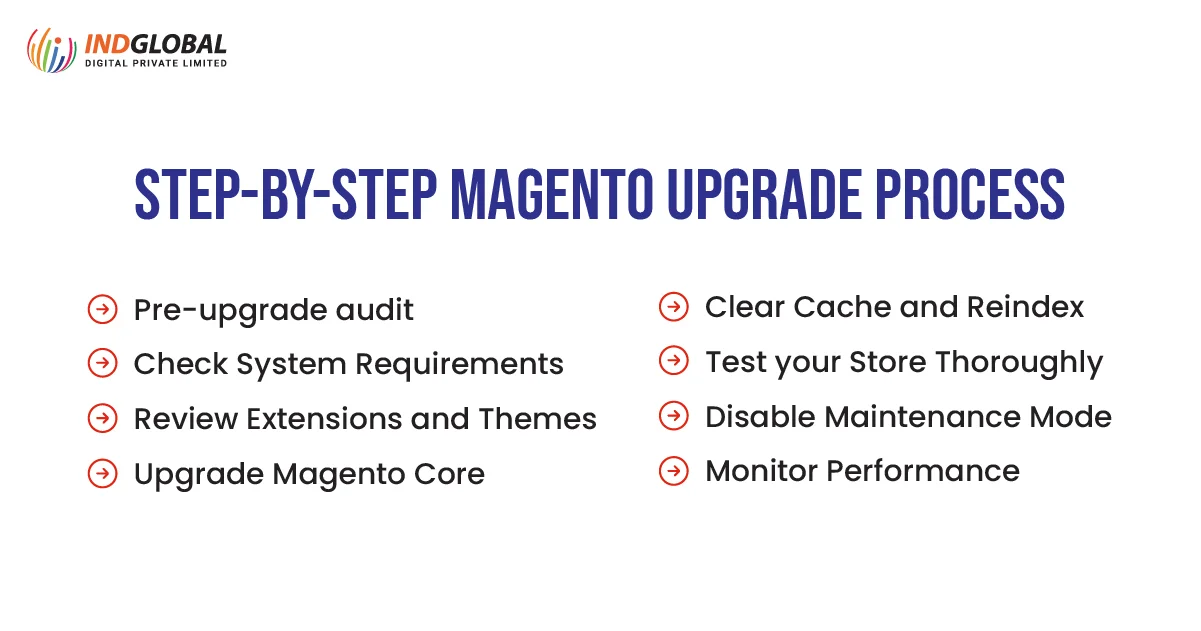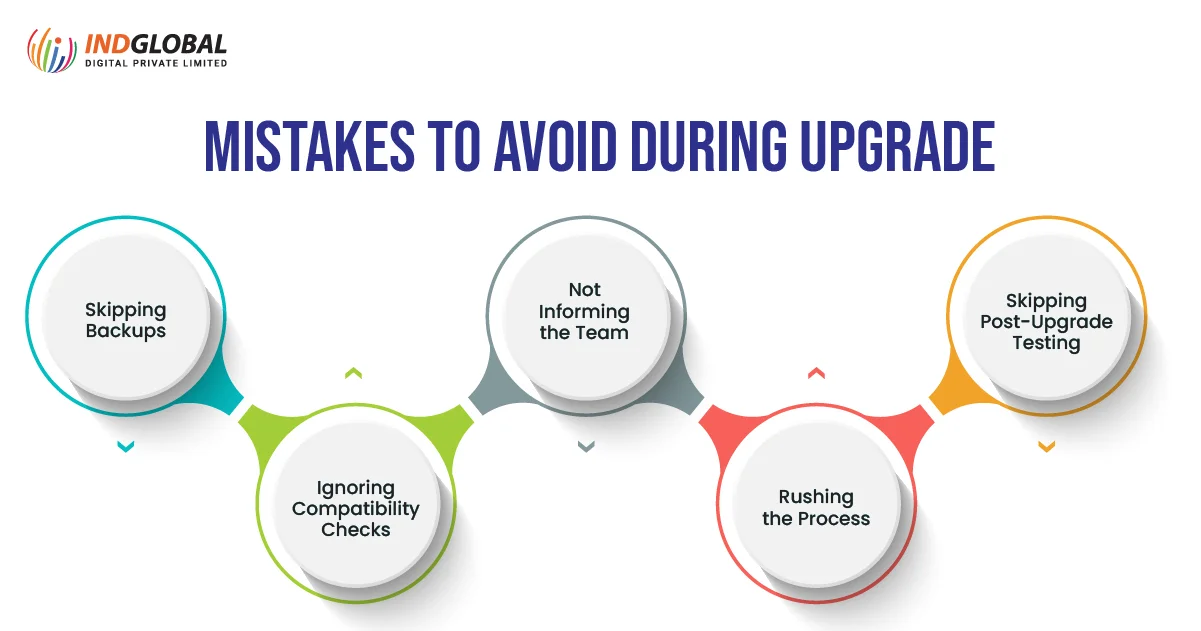If you own an eCommerce store and aren’t keeping it up to date, it’s like using a 3G phone with the expectations of having 5G’s features and speed. Nowadays, the world is so fast that even a 2-second delay can cost you a sale. Still, many online stores are working on outdated Magento versions, which are slow, insecure, and incompatible with modern tools.
To stay current with this fast-paced generation, consider upgrading Magento to the latest version and revamping the website design as a last resort. So let’s talk about the challenges, solutions, steps to achieve an upgraded version, and many more informative things in this blog.
Why Magento Upgrades Are a Must in 2025
1. Security Risks
Running your online store on an old Magento version is like using old locks; you’ll feel like they are perfectly doing their work and saving your website from hackers, but hackers have already made up the master key to hack and compromise the security. In 2025, cyber threats are becoming increasingly advanced. In response, Magento is continually developing more security fixes to accompany each new security feature.
2. Performance Boost
The latest Magento versions have optimised code, improved caching, and faster indexing, which means your website loads quickly and handles traffic more efficiently. A quicker website keeps customers engaged, reduces bounce rates, and can improve your SEO ranking.
3. Compatibility with Modern Technology
Suppose you want the latest PHP 8+ support, MySQL upgrades, and hosting optimisation, you can find it only in the latest version of Magento. Newer Magento versions are built to work with today’s technologies. Many third-party extensions stop supporting older versions, which can break functionality and create unnecessary headaches.
4. Improved Customer Experience
In the 2025 world, users expect fast and mobile-friendly experiences. An outdated store design or slow checkout can push them straight to your competitors. Upgrading ensures your store looks modern, functions smoothly, and builds customer trust.
5. Compliance with Industry Standards
In the latest Magento version, it’s easy to maintain PCI compliance and also comply with data protection regulations like GDPR.
Step-by-Step Magento Upgrade Process

If you think Magento upgradation means just changing some code, you are wrong. It’s a planned operation; you have to change everything: audit, staging, upgrade, testing, production, and monitoring.
1) Pre-upgrade audit
Before upgrading, check the Magento version, PHP, and MySQL to ensure you’re aware of the current environment. Don’t forget to back up your files, database, and media before making any changes, so you can restore them if needed.
2. Check System Requirements
Every time Magento’s new version comes up with some new specific requirements for PHP, MySQL, Elasticsearch, and more. You have to take care of one thing, that the hosting environment matches all the requirements so the store doesn’t have to face compatibility issues later.
3. Review Extensions and Themes
Don’t miss extensions or themes that seem outdated, as they may break after the upgrade. Check with your vendors for updated versions or replace unsupported ones before starting the upgrade.
4. Upgrade Magento Core
Update Magento to the latest version by using your preferred method, either Composer or the hosting panel tools. This step ensures you get the newest features, performance improvements, and security patches.
5. Clear Cache and Reindex
After upgrading, clear your Magento cache and reindex data. This helps your store run smoothly with the updated code.
6. Test your Store Thoroughly
Check all critical functionalities, such as the cart, checkout, payment gateways, and product pages.Testing ensures everything works as expected before going live.
7. Disable Maintenance Mode
Once you’re sure the store is stable, turn off maintenance mode.Your updated store is now live for customers.
8. Monitor Performance
For the next few days, monitor speed, error logs, and customer feedback closely. Quick action on any issues will keep your store running flawlessly.
Mistakes to Avoid During Upgrade

Upgrading your software or system is exciting, it brings new features, better performance, and improved security. But if not done carefully, it can also create unexpected problems. Here are some common mistakes you should avoid during an upgrade:
1. Skipping Backups
One of the biggest mistakes is not creating a backup before upgrading. If something goes wrong, you could lose important data forever. Always back up your files and settings so you can restore them if needed.
2. Ignoring Compatibility Checks
Before upgrading, make sure the new version works well with your existing hardware, operating system, and other tools. Ignoring compatibility can lead to performance issues or even system crashes.
3. Not Informing the Team
If you’re working in a team or managing a business system, inform everyone about the upgrade schedule. Sudden changes can disrupt workflow and confuse.
4. Rushing the Process
An upgrade should never be rushed. Take time to read instructions, understand changes, and test everything after installation. This will save you from big headaches later.
5. Skipping Post-Upgrade Testing
Once the upgrade is complete, test all key functions to ensure everything is running smoothly. Many people assume it’s fine and skip this step, but that’s when hidden issues often appear.
Advanced Features You Can Add During Revamp
If you’re already revamping your Shopify store, why not make it smarter and more future-ready? Adding advanced features can give your customers a smoother shopping experience and help your store stand out from the crowd. Here are some ideas worth considering:
1. AI-Powered Product Recommendations
Help shoppers find precisely what they need by showing them innovative suggestions based on their browsing and purchase history.
2. One-Click Checkout
Reduce cart abandonment by making the buying process quick and hassle-free.
3. Advanced Search & Filters
Let customers easily find products with smart filters like price range, size, colour, and even product ratings.
4. Integrated Chatbots & Live Support
Provide instant answers to customer queries, eliminating the need for email replies.
5. AR Product Previews
Enable shoppers to virtually “try” products like furniture, décor, or accessories before making a purchase.
6. Multi-Currency & Multi-Language Support
Perfect for stores looking to attract global customers and provide a personalised experience.
Conclusion
We’ve already discussed the importance of upgrading Magento, why it’s crucial for your online store, the step-by-step process, and the key mistakes to avoid. You need to change the code and do much more planning. Still, you as an individual can’t do it all alone perfectly, so find the best Magento website development company, and if you want to partner up with one of the best ones, find Magento web developers in Bangalore; they will surely live up to your expectations.

















